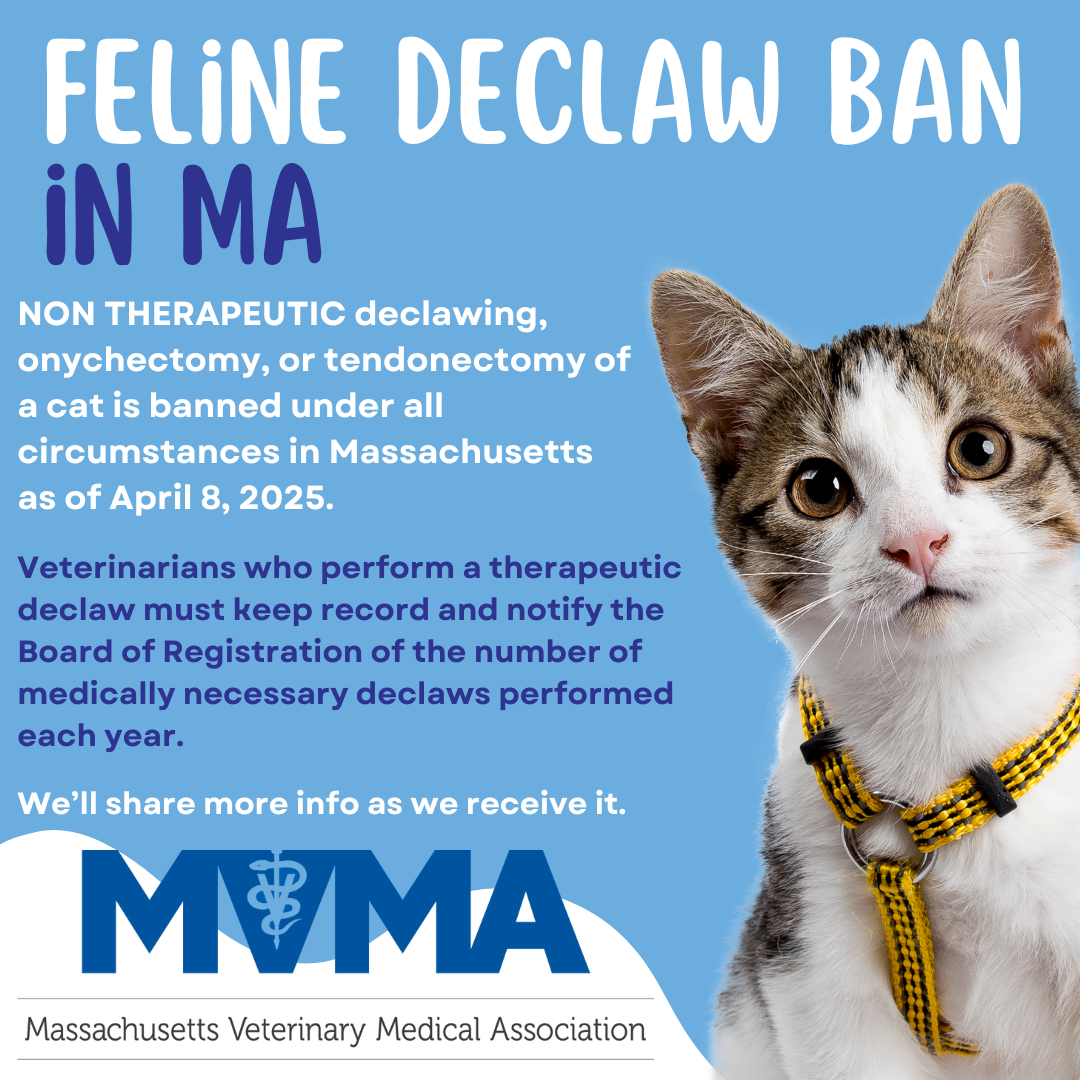Declaw Ban in Massachusetts - Update for Licensees in MA
 Declaw Ban in Massachusetts - Update for Licensees in MA
Declaw Ban in Massachusetts - Update for Licensees in MA
Governor Healey signed the Declaw bill (https://tinyurl.com/MAdeclaw) into law on January 9, 2025 and it will formally go into effect April 8, 2025.
NON THERAPEUTIC declawing, onychectomy, or tendonectomy of a cat is banned under all circumstances. Medically necessary, therapeutic procedures are allowed. Veterinarians performing a therapeutic declaw must keep detailed records of the medical condition and procedure and report the number of medically necessary declaws performed annually to the Board of Registration in Veterinary Medicine ("The Board").
We are in close contact with The Board and will continue to share important details as we receive them. For now, the recommendation is to continue to keep full and detailed records, including an internal note of how many therapeutic declaw procedures you perform.
What you need to know:
- Definitions
- “Declawing procedure:” an onychectomy, dactylectomy, phalangectomy or any other procedure that removes a portion of the paw or digit of a cat in order to remove a claw, including, but not limited to, a tendonectomy or any other procedure that cuts or modifies the tendon of the limb, paw or digit of a cat in order to prohibit the normal function of a claw or prevents the normal functioning of 1 or more claws; provided, however, that “declawing procedure” shall not include nail filing, nail trimming or the placement of temporary nail caps on 1 or more claws of a cat.
- "Therapeutic purpose:” addressing, as a matter of medical necessity, an existing or recurring infection, disease, injury or abnormal condition in the claw, nail bed or toe bone that jeopardizes the afflicted cat’s health; provided, however, that “therapeutic purpose” shall not include cosmetic or aesthetic reasons or reasons of convenience in the keeping or handling of the cat.
- Recordkeeping requirements:
- A veterinarian who performs a declawing procedure on a cat shall keep a record of the procedure for a period of 4 years after the last contact with the cat. The record shall include the name and address of the cat’s owner, the name and address of the person from whom payment is received for the procedure and a description of the cat, including, but not limited to: (i) the cat’s name, breed, date of birth, sex, color, markings and current weight; (ii) the date and time of the procedure; (iii) the reason the procedure was performed; and (iv) any diagnostic opinion, analysis or test result to support the diagnosis. The record shall be subject to audit by the board.
- Reporting:
- Any person who performs a therapeutic declawing procedure must report the number of performed procedures to the Board of Registration in Veterinary Medicine annually.
Please don't hesitate to reach out with questions.
